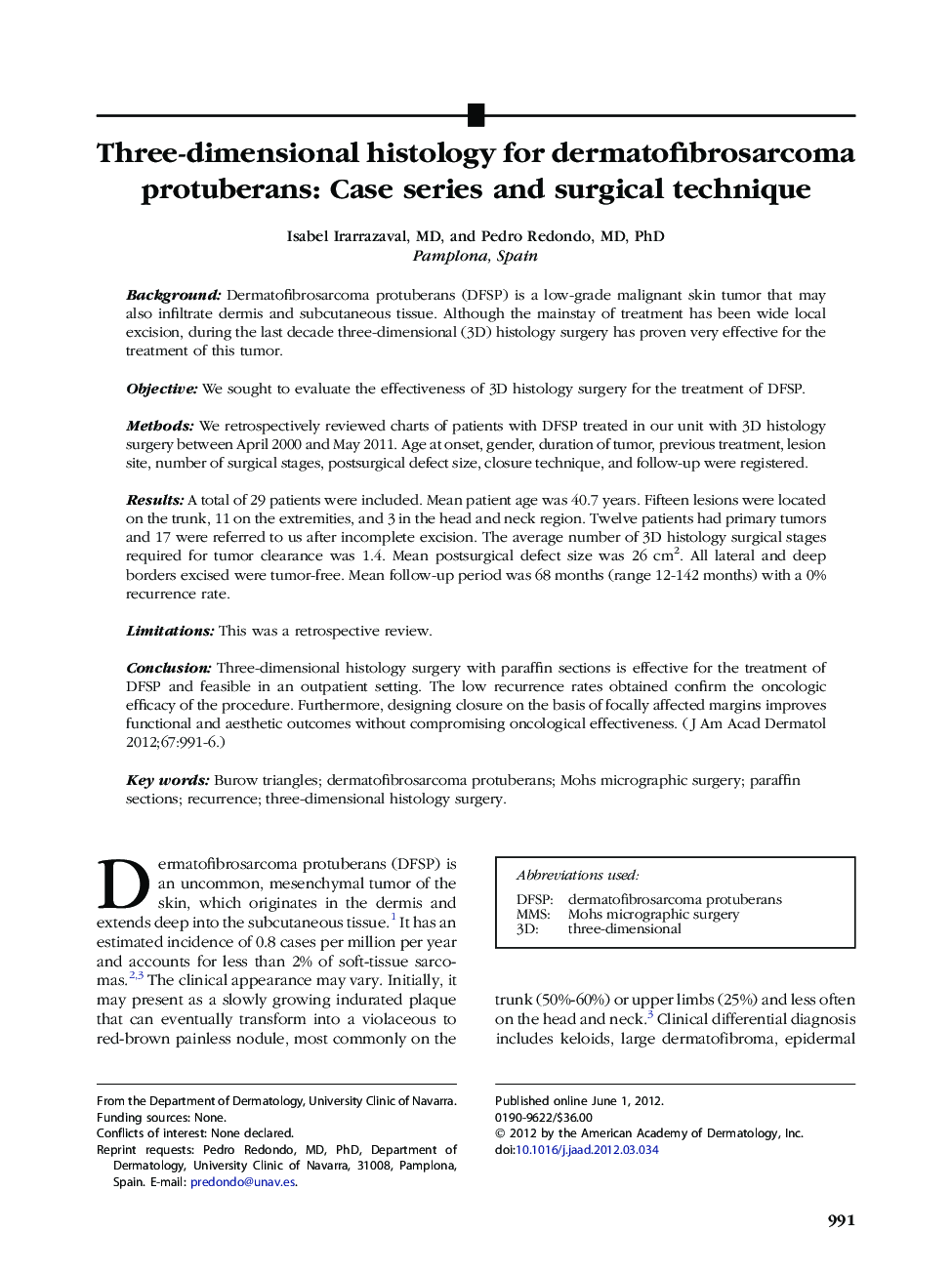| Article ID | Journal | Published Year | Pages | File Type |
|---|---|---|---|---|
| 3205932 | Journal of the American Academy of Dermatology | 2012 | 6 Pages |
BackgroundDermatofibrosarcoma protuberans (DFSP) is a low-grade malignant skin tumor that may also infiltrate dermis and subcutaneous tissue. Although the mainstay of treatment has been wide local excision, during the last decade three-dimensional (3D) histology surgery has proven very effective for the treatment of this tumor.ObjectiveWe sought to evaluate the effectiveness of 3D histology surgery for the treatment of DFSP.MethodsWe retrospectively reviewed charts of patients with DFSP treated in our unit with 3D histology surgery between April 2000 and May 2011. Age at onset, gender, duration of tumor, previous treatment, lesion site, number of surgical stages, postsurgical defect size, closure technique, and follow-up were registered.ResultsA total of 29 patients were included. Mean patient age was 40.7 years. Fifteen lesions were located on the trunk, 11 on the extremities, and 3 in the head and neck region. Twelve patients had primary tumors and 17 were referred to us after incomplete excision. The average number of 3D histology surgical stages required for tumor clearance was 1.4. Mean postsurgical defect size was 26 cm2. All lateral and deep borders excised were tumor-free. Mean follow-up period was 68 months (range 12-142 months) with a 0% recurrence rate.LimitationsThis was a retrospective review.ConclusionThree-dimensional histology surgery with paraffin sections is effective for the treatment of DFSP and feasible in an outpatient setting. The low recurrence rates obtained confirm the oncologic efficacy of the procedure. Furthermore, designing closure on the basis of focally affected margins improves functional and aesthetic outcomes without compromising oncological effectiveness.
